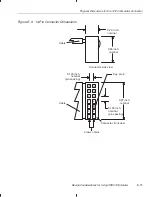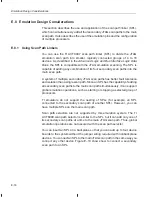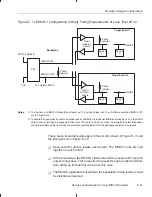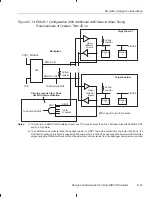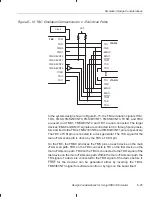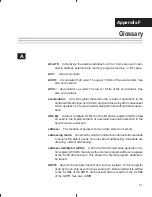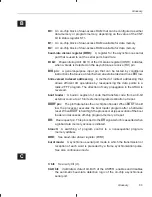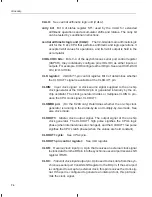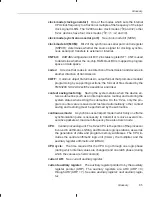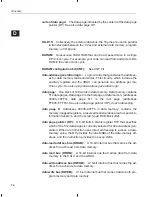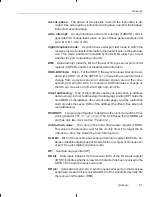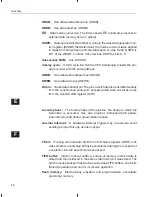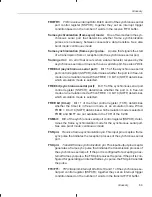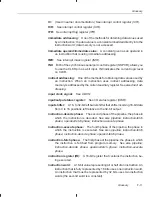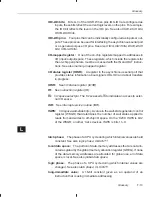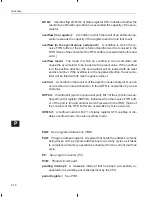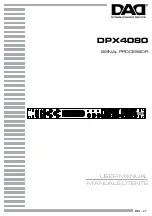
F-2
analog-to-digital (A/D) converter:
A circuit that translates an analog signal
to a digital signal.
AR:
See
auxiliary register.
AR0–AR7:
Auxiliary registers 0 through 7. See auxiliary register.
ARAU:
See
auxiliary register arithmetic unit (ARAU).
ARB:
See
auxiliary register pointer buffer (ARB).
ARP:
See auxiliary register pointer (ARP).
ARSR:
Asynchronous serial port receive shift register. A 16-bit register in the
on-chip asynchronous serial port that receives data from the RX pin one
bit at a time. When full, ARSR transfers its data to the ADTR. See also
ADTR.
ASPCR:
Asynchronous serial port control register. A 16-bit register used to
control the on-chip asynchronous serial port; contains bits for setting port
modes, enabling or disabling the automatic baud-rate detection logic, se-
lecting the number of stop bits, enabling or disabling interrupts, setting
the default level on the TX pin, configuring pins IO3–IO0, and resetting
the port.
auxiliary register:
One of eight 16-bit registers (AR7–AR0) used as point-
ers to addresses in data space. The registers are operated on by the aux-
iliary register arithmetic unit (ARAU) and are selected by the auxiliary
register pointer (ARP).
auxiliary register arithmetic unit (ARAU):
A 16-bit arithmetic unit used to
increment, decrement, or compare the contents of the auxiliary registers.
Its primary function is manipulating auxiliary register values for indirect
addressing.
auxiliary register pointer (ARP):
A 3-bit field in status register ST0 that
points to the current auxiliary register.
auxiliary register pointer buffer (ARB):
A 3-bit field in status register ST1
that holds the previous value of the auxiliary register pointer (ARP).
AVIS:
See
address visibility bit (AVIS).
AXSR:
Asynchronous serial port transmit shift register. A 16-bit register in
the asynchronous serial port that receives data from the ADTR and
transfers it one bit at a time to the TX pin. See also
ADTR; TX pin.
Glossary



